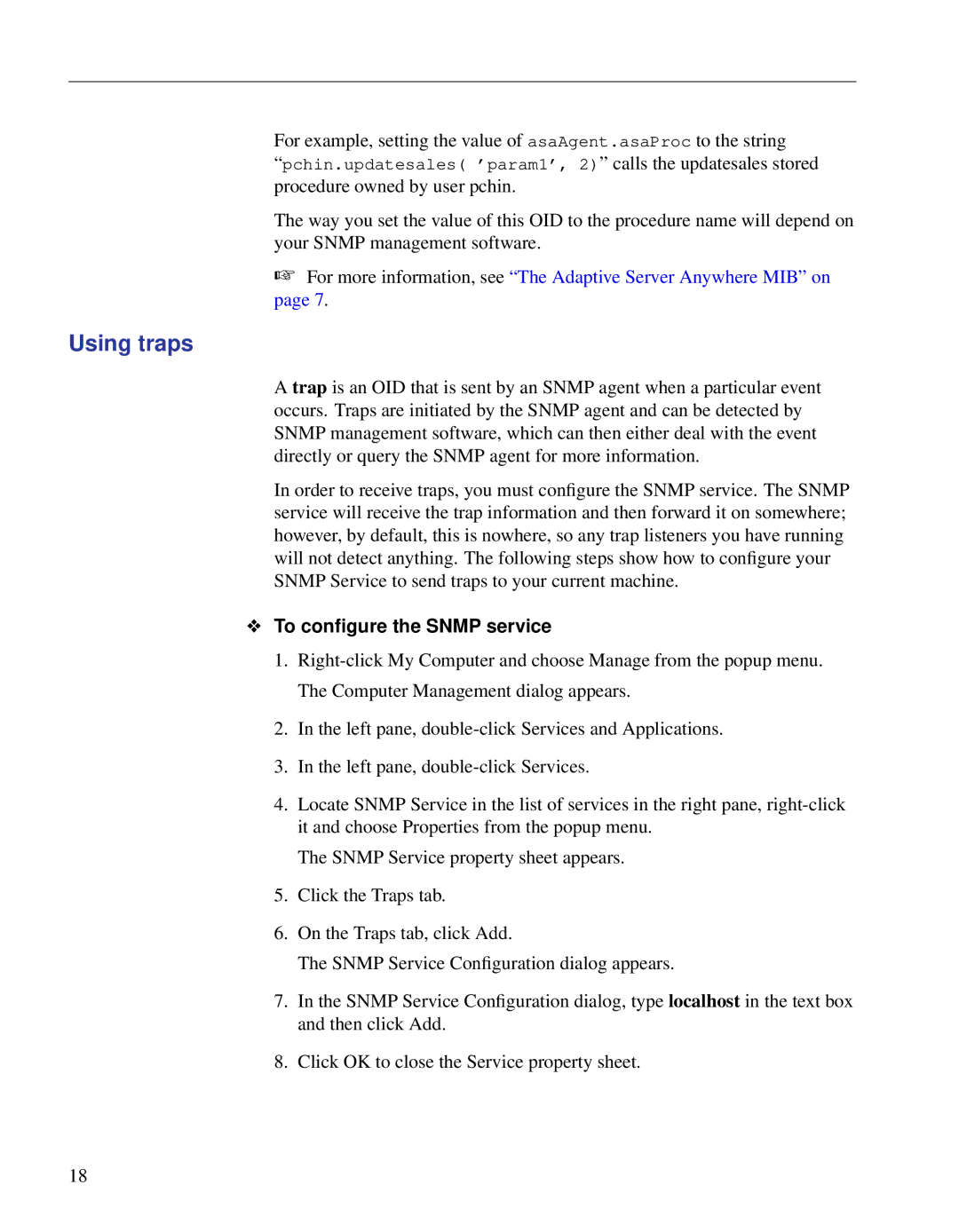For example, setting the value of asaAgent.asaProc to the string
“pchin.updatesales( ’param1’, 2)” calls the updatesales stored procedure owned by user pchin.
The way you set the value of this OID to the procedure name will depend on your SNMP management software.
☞For more information, see “The Adaptive Server Anywhere MIB” on page 7.
Using traps
A trap is an OID that is sent by an SNMP agent when a particular event occurs. Traps are initiated by the SNMP agent and can be detected by SNMP management software, which can then either deal with the event directly or query the SNMP agent for more information.
In order to receive traps, you must configure the SNMP service. The SNMP service will receive the trap information and then forward it on somewhere; however, by default, this is nowhere, so any trap listeners you have running will not detect anything. The following steps show how to configure your SNMP Service to send traps to your current machine.
❖To configure the SNMP service
1.
2.In the left pane,
3.In the left pane,
4.Locate SNMP Service in the list of services in the right pane,
The SNMP Service property sheet appears.
5.Click the Traps tab.
6.On the Traps tab, click Add.
The SNMP Service Configuration dialog appears.
7.In the SNMP Service Configuration dialog, type localhost in the text box and then click Add.
8.Click OK to close the Service property sheet.
18
